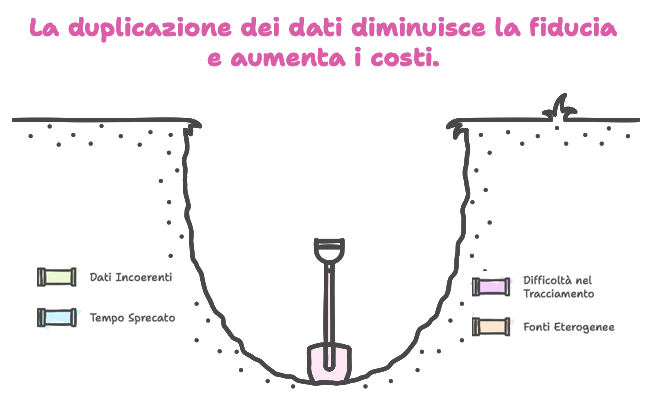A cosa serve un PIM?
- Aumentare le conversioni di acquisto e la fiducia dei clientiesaltando la Customer Experience e la chiarezza delle informazioni
- Ridurre i costi e i tempi di gestioneeliminando le attività manuali e migliorando l'efficienza operativa.
- Centralizzare, Raccogliere, organizzare e arricchire in un'unica piattaforma tutte le informazioni e i media (immagini, video, documenti) dei prodotti, garantendo dati sempre aggiornati e accurati.
- Distribuire informazioni e contenuti sempre coerenti e accurati su tutti i canali di vendita.
- Eliminare la proliferazione di dati duplicati e la dispersione in fonti eterogenee (Excel, XML, software, ecc.).
- Automatizzare e ottimizzare i flussi di dati da e verso altri sistemi aziendali, come ERP, CRM e piattaforme B2b, B2C, ecc.
- Ottimizzare i processi di gestione delle informazioni di prodotto, centralizzando e strutturando tutti i dati in modo efficiente.
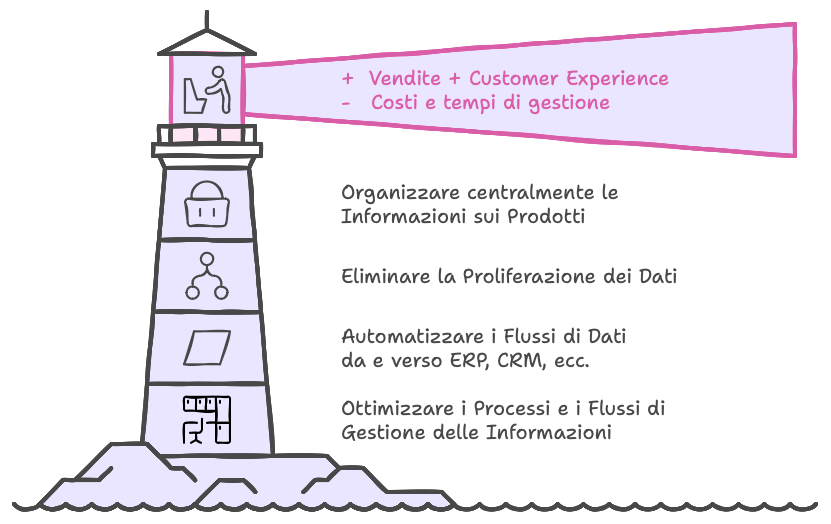
Cos'è il PIM?
Il Product Information Management (PIM) è un software gestionale che funge da contenitore principale di tutte le informazioni relative ai prodotti, siano essi fisici che digitali. È il punto di riferimento unico in cui è possibile gestire, organizzare e arricchire tutti i dati dei prodotti in modo strutturato e coerente.
Il PIM permette di organizzare le informazioni anagrafiche dei prodotti e di distribuirle facilmente tra i vari reparti aziendali, da e verso tutti i sistemi e canali, come portali B2B, piattaforme e-commerce B2C, CRM, ERP e molti altri.
Grazie al PIM, è possibile automatizzare i flussi e i processi di gestione dei dati. Creare cataloghi, schede prodotto e documentazione tecnica in modo rapido edefficiente.
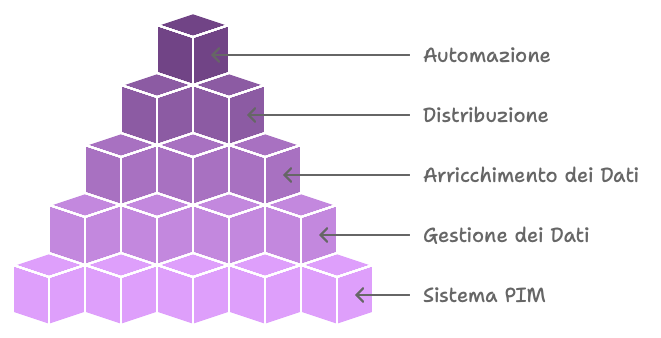
Cos'è un DAM?
Il DAM (Digital Asset Management) è il contenitore principale di tutte le risorse digitali aziendali, come documenti, listini, tracciati, immagini, video, file audio e molto altro. È una componente complementare del PIM ed è specializzato nella centralizzazione dei flussi e dei processi di gestione dei file associati ai prodotti.
Il DAM evita la proliferazione di duplicati o la dispersione di file su diversi sistemi (cloud, server, PC, software), garantendo efficienzanel la catalogazione, ricerca e utilizzo delle risorse digitali.
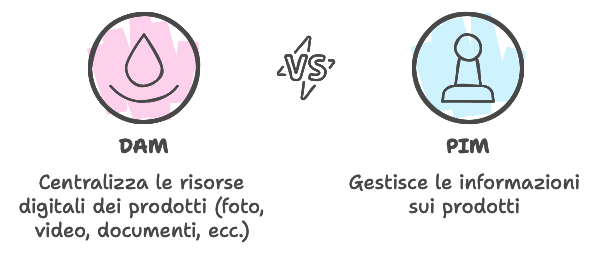
Come integrare un PIM all'interno dei miei processi?
Un PIM si integra in modo fluido e armonioso all'interno dei processi aziendali e dei sistemi software già esistenti. È una soluzione "non invasiva" e altamente personalizzabile, progettata per leggere, aggregare, organizzare e arricchire le informazioni provenienti dalle diverse fonti aziendali, per poi distribuirle facilmente ad utenti e altri sistemi.
La flessibilità del PIM permette di mappare i processi di gestione dei dati attuali e di automatizzarne le procedure, ottimizzando l’efficienza operativa e riducendo al minimo l’intervento manuale.
Grazie alle sue API standard, il PIM si interfaccia con tutti i sistemi, interni ed esterni all'azienda, garantendo un'integrazione completa e l'interscambio fluido dei dati, indipendentemente dalla complessità dell’ecosistema tecnologico in cui viene implementato.
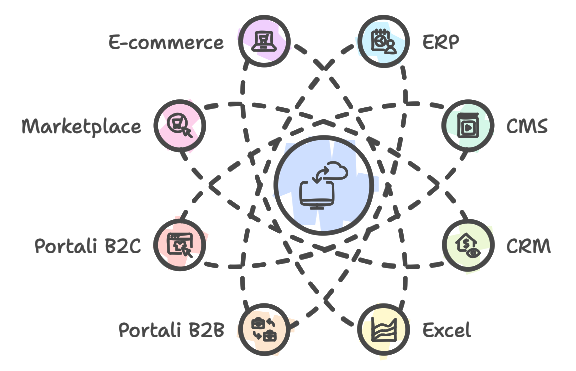
Quanto costa un PIM?
Per stimare accuratamente i costi complessivi, esamineremo la struttura aziendale, il settore, la scala operativa e la tipologia di prodotti, tenendo conto di categorie e contenuti da gestire. Questo processo iniziale, detto assessment, garantisce una pianificazione accurata e sostenibile del progetto.
Durante l’assessment:
- Mapperemo i processi aziendali coinvolti;
- Analizzeremo le integrazioni e automazioni con i sistemi esistenti;
- Mapperemo il ciclo del dato e le connessioni con altri sistemi;
- Definiremo i dati necessari per lo sviluppo di connettori;
- Disegneremo lo stato attuale dei sistemi (“As-is”) e la soluzione futura (“To-be”);
- Definiremo l’ambito e le risorse necessarie;
- Elaboreremo un piano di implementazione dettagliato con una valutazione economica.
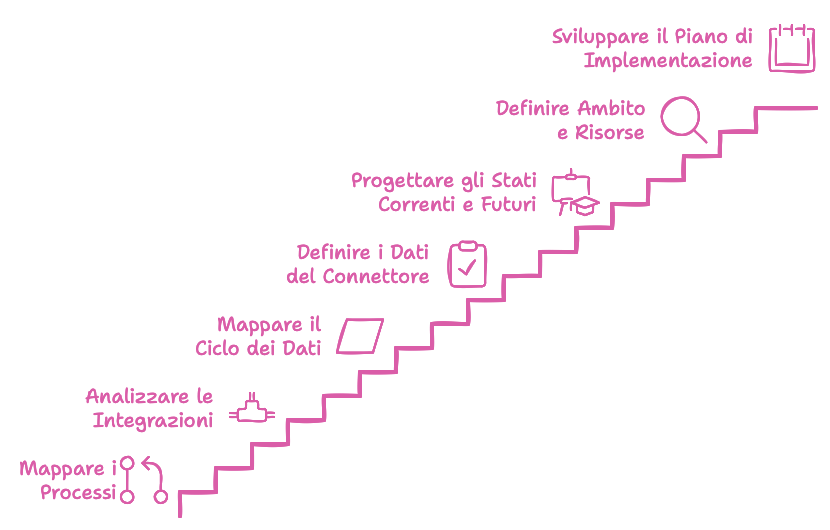
Quanto costa NON avere un PIM?
Non avere un sistema di Product Information Management (PIM) può comportare costi nascosti e inefficienze che impattano pesantemente sulla produttività e i profitti aziendali.
- Dati incoerenti e mancata uniformitàIl 60% delle aziende fatica a garantire la coerenza delle informazioni sui prodotti su tutti i canali di vendita.
- Tempo sprecato in attività ripetitiveI team di marketing e operations dedicano il 40% del loro tempo ad attività ripetitive legate alla gestione manuale dei dati di prodotto.
- Difficoltà nel tenere traccia delle modificheIl 50% delle aziende senza un PIM trova difficile tenere traccia delle modifiche ai dati di prodotto.
- Fonti eterogenee e processi di gestione del dato non standardSenza un PIM, le aziende spesso gestiscono dati provenienti da fonti diverse, come file Excel, e-mail o database interni, con processi non standardizzati. Questo comporta errori, duplicazioni e ritardi nella gestione delle informazioni.
